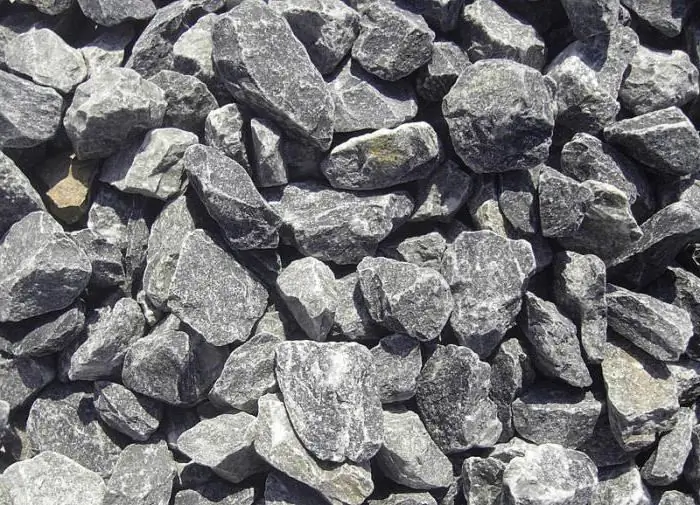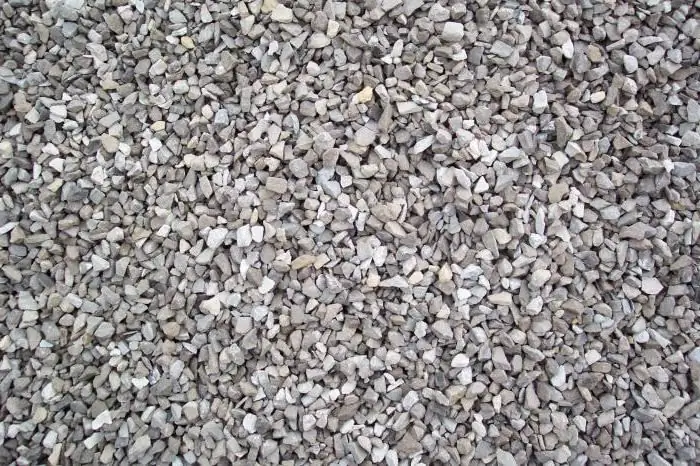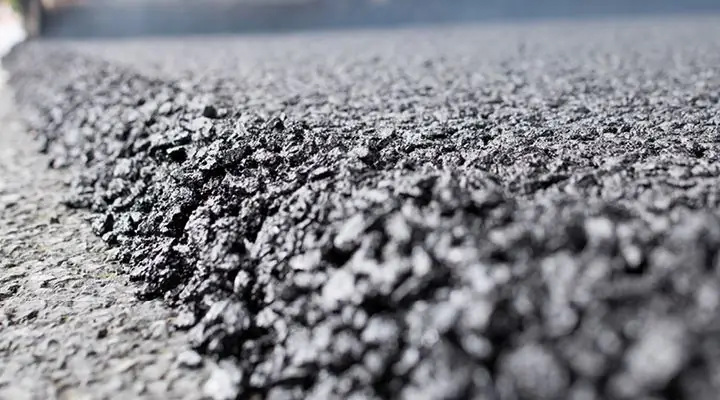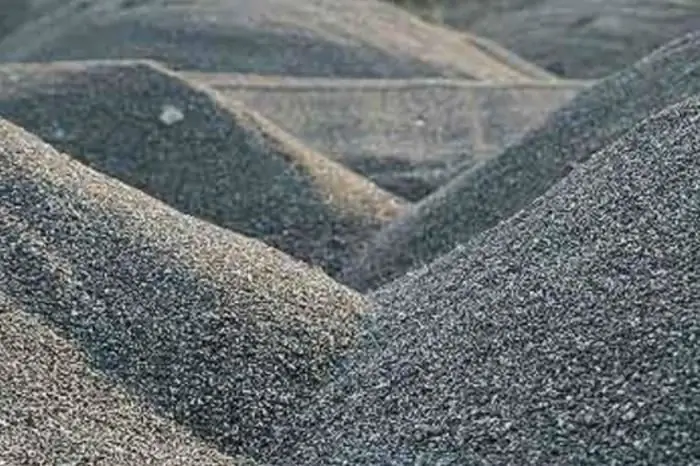2026 Author: Howard Calhoun | [email protected]. Last modified: 2025-01-24 13:10:26
Non-metallic bulk materials are the main components in the construction industry. Sand, crushed stone are used in the production of concrete and reinforced concrete structures, building mixtures. These materials are used for the preparation of foundations, planning, landscape works. In road construction, crushed stone is used as an underlying layer of the roadway. Some types of crushed stone are used to improve the surrounding areas.

Types of gravel and sand
All bulk building materials are classified according to several basic criteria:
- origin;
- physical and mechanical properties (density, strength, frost resistance, moisture absorption);
- shape and size of grains;
- level of radioactivity, the presence of organic and inorganic impurities.
The nature of the origin of crushed stone and sand depends on the source material. There are crushed stone from rocks, ore crushed stone, which is produced from metallurgical recyclable materials and secondary, obtained by crushing construction waste (concrete, brick). The physical and mechanical properties of crushed stone directly depend on the material of its origin. The most demanded materials, which are based on rocks of highstrength - resistant to deformation and destruction under mechanical stress. By grain size, crushed stone is divided into several types: screening (up to 5 mm), medium (5-25 mm), large (25-40 mm).
Sand by origin is divided into natural and artificial. Natural bulk material is obtained during the development of sand or sand and gravel deposits. Depending on the occurrence, sea, river or mountain sand is distinguished. The first two types are distinguished by more rounded grains and a lower content of impurities, compared with materials mined in quarries. According to the size of the granules, sand is divided into coarse, medium and fine.

Natural sand production
Production of natural non-metallic bulk materials includes several stages:
- mining;
- processing and enrichment (if required);
- storage.
Practically all types of bulk materials are mined in an open pit. Quarry sand is mined by excavators or bulldozers. In the production of mountain sand, due to the presence of a large amount of impurities and different sizes of granules, additional processing and enrichment of raw materials is required. This process consists of washing and sorting the material. For the production of the finest fraction used in the production of building mixtures based on cement, additional grinding of sand with roller crushers is possible. Natural sand belongs to materials prone to caking, therefore, in its production, a bunker for bulk materials is often used - a devicein the form of an inverted truncated pyramid for storage and supply of bulk raw materials.
River sand is extracted by hydromechanical method in reservoirs. Barges with hydraulic pumps pump raw materials from the bottom of the river to a hydraulic dump on the shore. The water flows back into the river, while the sand remains in the dump. If the bottom surface is too dense, a bucket elevator is additionally used.

Production of artificial sand
The geographical distribution of natural sand deposits is uneven, which can lead to a shortage of this material in some regions. The production of artificial sands can largely solve this problem, providing the necessary needs. Artificial bulk material is obtained by crushing hard rocks and raw materials from other sources. Depending on the material of origin, the following types of artificial sand are distinguished:
- Crushed. Used in acidic and decorative formulations. Produced by crushing marble, diabase, bas alt or dense metallurgical slags.
- Light sands, organic and inorganic. Bulk material derived from pumice, volcanic slag, tuff, agricultural and wood waste.
- Sedimentary sands are the result of grinding shell rock.
- Expanded sand, obtained by crushing expanded clay rocks - heat-insulating material, filler for lightweight concrete and mortars.
- Porous slag sands.

Crushed stone production
Raw material forcrushed stone production is mined in an open way in quarries of various rocks. Depending on the characteristics of the deposit and the extracted rock, the method of developing deposits is selected. For especially hard rocks, preliminary drilling and blasting is carried out. A charge is laid in pre-drilled wells. The explosion breaks the rock into pieces, which are sent for further processing.
Extracted raw materials go to crushing, which is carried out by crushers of various types (roller, jaw, impact, cone). The choice of technique is made depending on the type of end product. After crushing, the finished crushed stone is sent for sorting. The screening method divides the material into fractions according to the grain size. The installation consists of several large sieves with holes of different diameters. The smallest fraction passes through all levels of sieves, settling in the pallet. In the process of sorting into fractions, crushed stone can be washed to remove clay impurities.

Main types of rock crushed stone
There is a fairly large group of these materials, but among them the following types are most in demand:
- Granite - the most durable crushed stone of igneous origin. It is based on quartz, mica and feldspar. The most common shades are red, pink, gray. Due to its origin, when choosing this material, special attention should be paid to the certificates of radioactivity. Due to physical and mechanical properties, the most popular type of crushed stone.
- Gravel. The basis of this material is rocky mountainbreeds. This type of crushed stone is produced in two ways - crushing rocks (chopped gravel) and sifting river or sea soil (rounded gravel). In terms of strength, it is significantly inferior to granite, but cheaper with a low radiation background.
- Quartzite. Bulk material from rocks of quartz. It is not inferior to granite in strength, but at the same time it has a slight radiation background. Due to the original structure and attractive colors, it is very popular in decoration.
- Limestone. Produced by crushing sedimentary rocks. In terms of strength, it is inferior to all other types of crushed stone. The basis is dolomite and lime. Advantageous difference - low price.

Application areas for bulk materials
The range of application of non-metallic bulk materials is extremely large, covers almost all stages of construction and is quite in demand in other types of work:
- Preparation of concrete of various grades.
- Production of concrete products.
- Road construction.
- Arrangement of railways, runways.
- Landscape design.
- Livestock.
- The device of a protective layer on the road surface in case of ice.
Transportation of bulk materials
Transportation of bulk materials is carried out by rail (over long distances), road and river transport. For rail transportation, gondola cars, open platforms, dump cars are most suitable - special gondola cars with the possibility of automated unloading byoverturning. For the transportation of sand and gravel by road, dump trucks are the most suitable. Delivery of bulk materials by river barges is the cheapest transportation option, but it is relevant only in case of close proximity to waterways. During transportation, it is not recommended to transfer these materials to other vehicles on the way to the place of delivery in order to avoid losses.

Storage and sale
After mining and, if necessary, enrichment, crushed stone in the form in which the consumer sees it is sent to the warehouse. Each type and fractional composition of bulk material is stored separately. Storage areas should be level and should not collect rainwater. If necessary, additional protection against groundwater is made. In winter, materials are cleared of snow and ice.
Delivery of non-metallic materials from the place of storage is most often carried out by road. Exceptions are large enterprises with separate railway lines. For safe and convenient shipment of materials to the end user, the storage area is equipped with convenient access roads. Usually one-way ring traffic is organized. For convenience of loading and prevention of caking, a bunker for bulk materials is used. Artificial lighting is provided for work at night.
Recommended:
Types of crushed stone: description, characteristics, scope and origin

Crushed stone is a crushed stone and is divided into fractions according to its size. Technical characteristics such as flakiness, density, frost resistance, fraction, radioactivity affect the areas of use of crushed stone and its cost
Crushed stone: types, characteristics, applications and reviews

Crushed stone, the types of which will be described in more detail below, is a building material obtained as a result of the initial grinding and subsequent sifting of rocks
Fraction is an important parameter when choosing crushed stone and sand for construction

Without sand and gravel, it is impossible to produce the most common building material - concrete, and to carry out any construction work. Depending on the needs, the desired fraction is selected, which is provided for by building standards. How to make the right choice, consider below
Crushed-stone-mastic asph alt concrete (ShMA): GOST, properties and characteristics

According to GOST, roads must be laid using asph alt concrete, which contains a stabilizing component. Its properties and appearance are of great importance for improving the quality of the final material, its transportation, preparation and installation. Additives are structuring fibrous. They allow you to maintain uniformity and help keep hot bitumen on the surface of crushed stone
Density of crushed stone - gravel, granite, limestone and slag. Bulk density of crushed stone: coefficient, GOST and definition

Crushed stone is a free-flowing, inorganic and granular material obtained by artificial crushing. It is divided into primary and secondary. This is an important fact. Primary - the result of processing natural stone: pebbles, boulders, pumice and other materials. Secondary is obtained by crushing construction waste, such as concrete, asph alt, brick. In this text, we will consider in more detail such a property as the density of crushed stone

